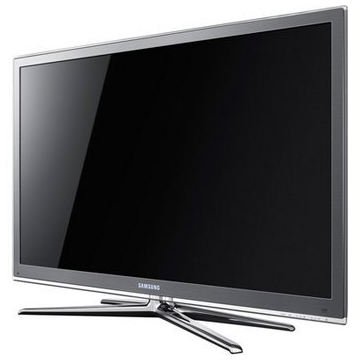All About Samsung 3D TV Sets: Lineup, Features & More
3D Television From Samsung
Samsung is one of the top electronics makers in the world. Like most other TV manufacturers, Samsung has jumped in with both feet into the 3D television market.
3D TV works in many ways like 3D movies do. Indeed, much of the available 3D content comes from new Blu-ray DVDs of 3D movies. These special Blu-ray DVDs carry essentially two copies of the film. One copy is meant for the right eye and the other copy is meant for the left eye. Of course, to make sure the right eye sees the right image at the right time takes more than just a fancy DVD player. It also takes a fancy TV, and, yes, a pair of special 3D glasses.
Enter Samsung’s lineup of 3D television sets. The Samsung PN50C7000, for example, is one of the company’s 3D-ready plasma TVs. Many of the set’s specifications read like any other high-end plasma TV set. A 50-inch screen, HDTV tuner up to 1080p, HDMI inputs, high dynamic contrast ratio, and so on. What makes it special is a 3D rendering engine that takes a 3D source signal and displays it to the screen in a precise manner allowing it to produce a 3D picture in your own home theater.
Samsung has branded their 3D rendering system, Hyper Real 3D Engine. The system takes a 3D signal and then displays it on the screen in a specific manner. Essentially, a 3D source sends two signals. Each signal is displayed on the televisions screen just like any regular 2D content. However, the Samsung 3D TV emits a signal that is received by a pair of Samsung 3D glasses. For example, the Samsung 305P2100T 3D glasses are compatible with the PN50C7000 3D TV. The glasses only allow one eye to see the screen at a time. The signal from the TV instructs the glasses when to allow the right eye to see and then when to allow the left eye to see. When this all matches up, the result is realistic 3D images from your TV set.
What To Watch On A Samsung 3D TV
The big catch to 3D television today — other than the glasses — is that there is not that much 3D content being broadcast. Certain sporting events are broadcast with a 3D signal, as are a certain number of non-mainstream shows. ESPN has announced that it will begin broadcasting 3D channels in 2011. Otherwise, the only real 3D content comes from movie DVDs.
3D DVDs come on special 3D Blu-ray DVDs that need to be played in a 3D Blu-ray player. Nothing is backward compatible, so your old DVDs won’t have a 3D version on them, and your old DVD player won’t play new 3D DVDs.
Fortunately, all Samsung 3D TVs, and all other manufacturer’s as well, can display regular 2D TV shows and programming as well as any standard television with similar specifications.
Samsung 3D TVs also offer the ability to take regular 2D images and turn them into a 3D image. The television works in conjunction with the glasses to essentially “guess” where there should be depth in an image and then slightly altering the images into two separate series which are then displayed to the right and left eye by the glasses in the same way as true 3D sources are. As you can imagine, the effect is better on some things than on others. The more contrast and “obvious” edges and shadows there are, the better the 3D effect.
The coming availability of 3D broadcasting plus the ability to turn some 2D content into 3D makes Samsung’s 3D TVs an interesting addition for the home theater enthusiast who already has everything else.
Image courtesy of Samsung.com
